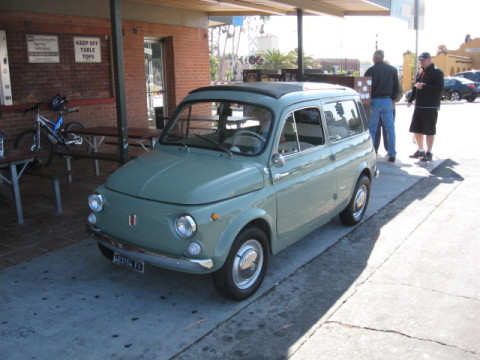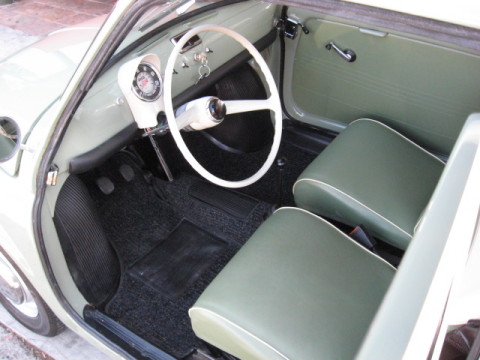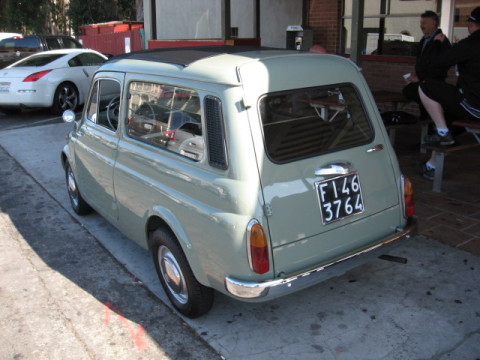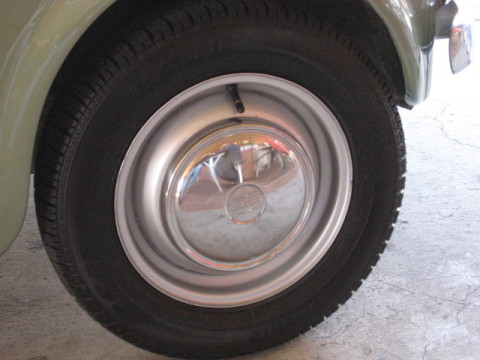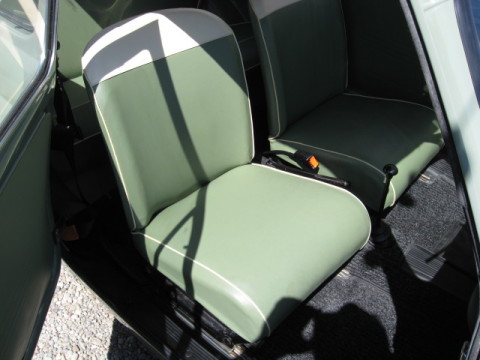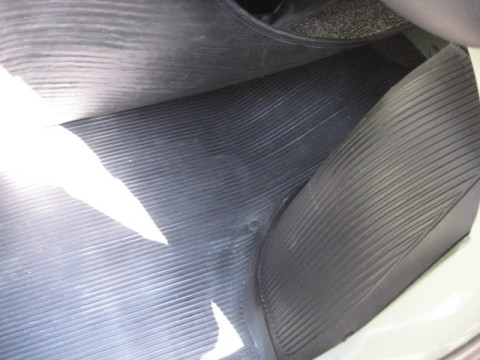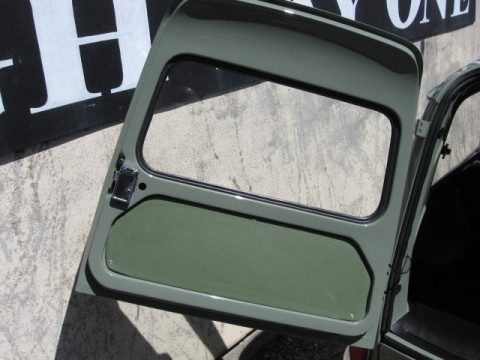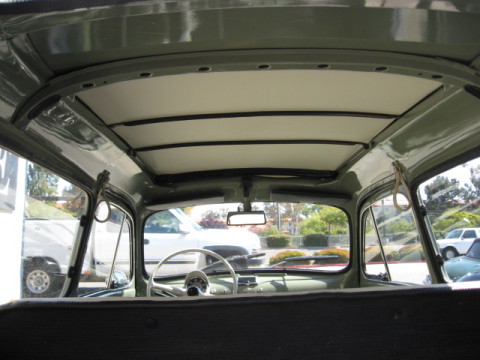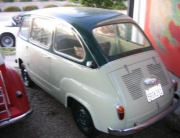Exterior Color: Green
Interior Color: Green/Cream
Soft Top Color: Black
Transmission: 4 speed
“500” is also Fiat’s model number for the earlier Fiat Topolino, later Fiat Cinquecento and current Fiat Nuova 500
Fiat 500
A white Fiat 500 in Pisa, Italy
Manufacturer Fiat
Production 1957—1975
Predecessor Fiat Topolino
Successor Fiat 126
Class City car
Body style(s) 2-door coupé
3-door estate
Layout RR layout
Engine(s) 479 cc Straight-2
499 cc Straight-2
594 cc Straight-2
Transmission(s) Manual 4-speed
Wheelbase 1.84 metres (72.4 in)
Length 2.97 metres (116.9 in)
Width 1.32 metres (52.0 in)
Height 1.32 metres (52.0 in)
Curb weight 499 kg (1100 lb)
Related Autobianchi Bianchina
Designer Dante Giacosa
The Fiat 500 (the “cinquecento”, /tʃin.kwe.tʃen.to/, or “chin-kwe-chen-to”, from the Italian word for “500”) is a car produced by the Fiat company of Italy between 1957 and 1975 (the Fiat 500 K alone was produced until 1977). It was designed by Dante Giacosa. In 2007 Fiat lauched a similar looking, retro-styled car, basing it on the Fiat Panda. Launched as the Nuova 500, it was marketed as a cheap and practical town car. Measuring only 2.97 m (9 ft 9 in) long, and originally powered by a tiny 479 cc two-cylinder, air-cooled engine, the 500 redefined the term “small car” and is considered one of the first city cars.
History
To meet the demands of the post-war market which called for economy cars, the Fiat 500 was rear-engined on the pattern of the Volkswagen Beetle. Several car makers followed this now nearly vanished design at the time and were quite successful, but only the Fiat 500 was used as the template for other car makers in Europe. The firms Neckar of Germany and Steyr-Puch in Austria each made cars that were legally based on the Fiat 500.
Despite its diminutive size, the 500 proved to be an enormously practical and popular vehicle throughout Europe. Besides the two-door coupé, it was also available as the “Giardiniera” station wagon; this variant featured the standard engine laid on its side, the wheelbase lengthened by 10 cm (4 in) which yielded a usable rear seat, a full-length sunroof, and larger brakes from the Fiat 600.
Production of the 500 ended in 1975, although its replacement, the Fiat 126, was launched two years earlier. The 126 was never as popular as its predecessor in Italy, but was (and still is) enormously popular in the former Eastern Bloc countries, where it is famed for mechanical durability and economy.
Please call for further details.

